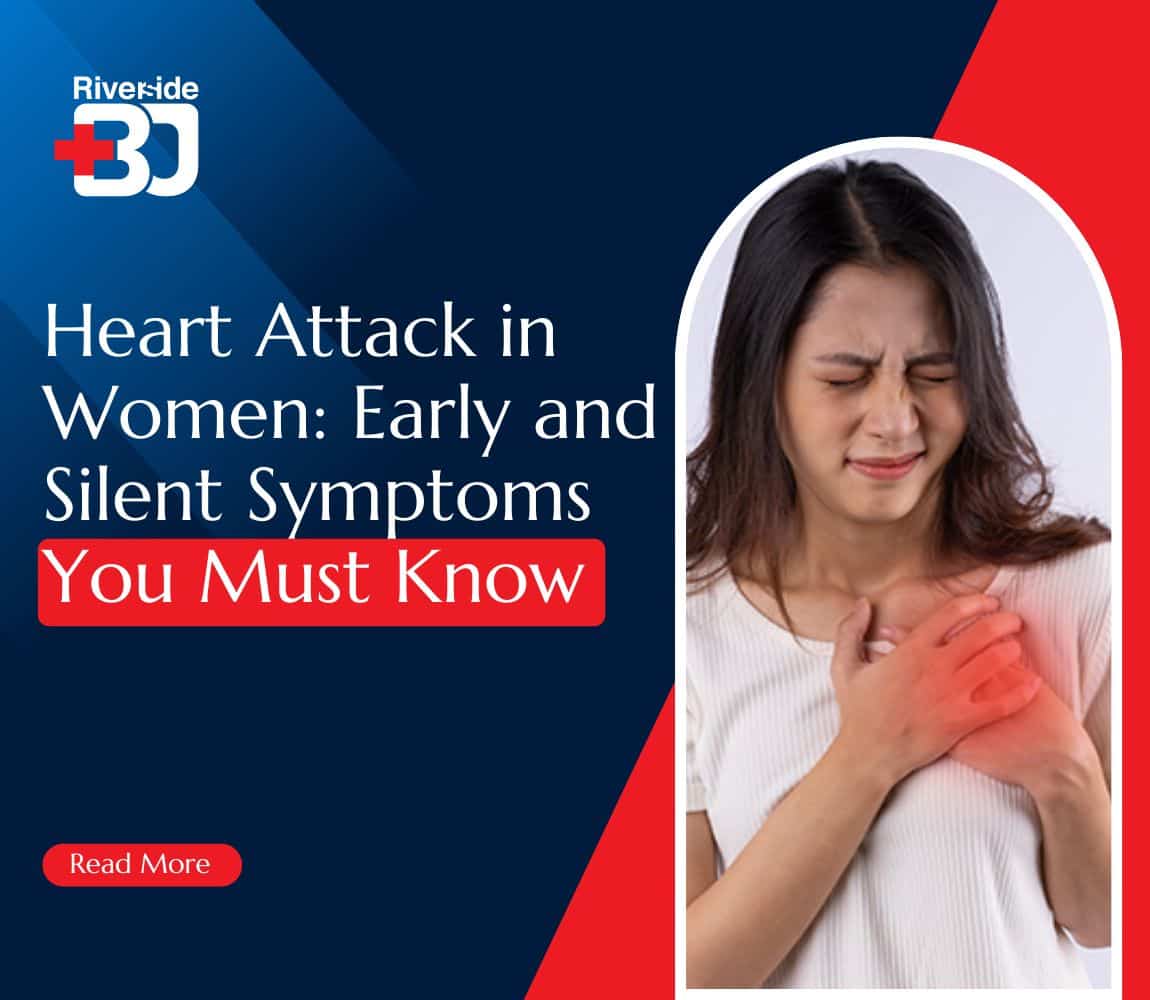A heart attack in women can look very different from the one in men, and that’s part of the problem.
According to the National Institutes of Health, heart disease is the leading cause of death among women worldwide, and many people don’t realise it.
What makes it especially dangerous is how often they are missed. The symptoms can be subtle, sometimes mistaken for stress or exhaustion.
Unlike the dramatic scenes we associate with heart attacks, many women experience quiet and creeping signs that go undetected.
Knowing how to spot these symptoms of heart attacks in women early is vital. Let’s explore the early warning signs, the symptoms, and preventive steps for a heart attack in women.
Why Heart Attacks in Women Are Often Missed
A heart attack in women often goes unrecognised due to subtle and non-typical symptoms. These signs are frequently mistaken for stress or digestion issues. Therefore, it leads to delays in diagnosis.
Understanding these differences are key to an early and life-saving treatment.
1) Silent Symptoms and Misdiagnosis
One major reason for a heart attack in women is the lack of dramatic symptoms.
Instead of sharp chest pains, women may experience vague signs that mimic daily discomforts. Because of this, they may delay seeking care or even misjudge the severity of their condition.
Some common subtle symptoms of a heart attack in women include:
- Unexplained fatigue or weakness, especially when performing routine tasks.
- Shortness of breath without exertion.
- Mild chest discomfort instead of intense pain.
- Dizziness or feeling lightheaded.
- Pain in the jaw, back, or arms.
These are often dismissed by both patients and providers. This increases the risk of complications if left untreated.
According to the British Heart Foundation, women are 50% more likely to receive a wrong initial diagnosis. Therefore, this highlights the importance of understanding female heart attack symptoms for earlier detection.
2) Risk Factors Specific to Women
Some risk factors make a heart attack in women more likely, even at younger ages.
Many relate to hormonal or biological changes and are often overlooked in everyday conversations about women’s health.
Some of the factors are:
- Menopause and oestrogen drop.
- Autoimmune conditions (e.g., lupus, rheumatoid arthritis).
- Polycystic ovary syndrome (PCOS).
- Pregnancy-related conditions like preeclampsia.
- Emotional stress and depression, more common in women.
Additionally, many women also balance careers, family, and caregiving roles. This chronic stress can silently strain heart health over time and cause a heart attack in women.
Ultimately, knowing the risks and monitoring your heart can make a lasting difference. It’s also wise to ask your doctor how to know if your heart is healthy.
Did you know? As per a study, Healthline.com showcases that women may be twice as likely to experience a fatal heart attack compared to men.
Early Signs of a Heart Attack in Females
The early signs of a heart attack in women can be mild or seem unrelated, like fatigue or breathlessness. This often leads to delayed care and an increasing risk.
Here’s what you should watch for:
1) Common Early Symptoms
The early symptoms of a heart attack in women are often subtle but meaningful. They may even seem harmless at first or be mistaken for less serious issues. However, recognising them early help prevent complications and can even save lives.
Some of the common symptoms are:
2) Unusual Fatigue
Feeling exhausted even after a light activity is often ignored. Yet, it can signal an early female heart attack in progress. It is especially possible when it accompanies chest discomfort or shortness of breath.
Watch for fatigue that feels new, overwhelming, or doesn’t improve with rest.
3) Shortness of Breath
If walking short distances leaves you breathless, don’t overlook it. Many women report this symptom weeks before a heart attack occurs. Breathlessness during rest or while lying down can also be a warning sign.
4) Mild Chest Discomfort
You may not feel sharp pain. Instead, there might be tightness, burning, or pressure in the chest area, especially during rest or mild activity.
This discomfort may spread to the neck, jaw, shoulders, or the back, often going unnoticed or dismissed.
5) Sleep Disturbances
Waking frequently or having trouble staying asleep may indicate a higher risk of a heart attack in women. This is one of the lesser-known early symptoms of a heart attack in females. Watch for sudden insomnia or restlessness even in calm environments.
Even if these signs seem minor, they can point to something serious. You must pay attention to these changes in your daily health routine.
Pre-Heart Attack Symptoms in Women
Many symptoms before a heart attack a woman’s body shows are non-specific. However, they are crucial to be recognised early. These symptoms may come and go for days or even weeks, especially during colder months when the risk of heart attack in winter can be higher.
Look out for these warning signs to avoid a heart attack in women:
- Discomfort in the neck, jaw, shoulder, or upper back.
- Unexplained sweating, even while resting.
- Indigestion or a feeling of fullness that doesn’t go away.
- Anxiety or a sudden sense of doom.
- Light-headedness or fainting spells
- Irregular heartbeat or fluttering in the chest
If these appear together, seek medical attention and don’t wait. Women often downplay symptoms or wait until after work or caring for others. But time is critical, and delays can lead to emergency surgery or worse outcomes.
Understanding how the heart attack in women differs can save your life. Learn to identify female heart attack symptoms early and take action quickly.
Full List of Female Heart Attack Symptoms
A heart attack in women may show both typical and unusual symptoms, often catching them off guard.
Because these signs differ from men, understanding the full range is key to recognising trouble early and acting fast.
1) Classic vs. Atypical Symptoms
Recognising the difference between classic and atypical symptoms of a heart attack in women is vital. While some signs are familiar, others may surprise you. Awareness should be your first defence against delayed diagnosis.
2) Classic Heart Attack Symptoms in Women
Some heart attack symptoms in women follow the “textbook” pattern we often hear about in the media or health talks. Yet, even these signs can appear less severe in women, making them easy to overlook.
Symptoms of a classic heart attack in women are:
- Chest pain or pressure that lasts more than a few minutes.
- Pain spreading to the left arm, neck, or back.
- Cold sweats during rest or light activity.
- Feeling faint or light-headed without a clear reason.
Although these are classic symptoms, many women still don’t associate them with a heart attack. That’s why every unusual sign deserves attention, even if it doesn’t seem urgent.
3) Atypical Heart Attack Symptoms in Women
On the other hand, many early signs of a heart attack in women seem unrelated to heart health. Therefore, they’re often mistaken for digestive problems, stress, or fatigue, delaying life-saving care.
- Nausea or vomiting that is not due to food-related causes.
- Sudden jaw or throat discomfort not linked to dental issues.
- Unexplained exhaustion even after a full night’s sleep.
- Sharp pain in the upper back or between the shoulder blades.
Since these aren’t your usual signs, women must trust their instincts and seek immediate medical help. Ignoring these early symptoms of a heart attack in women can lead to irreversible damage.
Symptoms of Heart Problem in Women
A heart attack in women may not begin with an obvious pain.
Instead, subtle signs like fatigue, breathlessness, or nausea can appear. Recognising these early symptoms of a heart attack in women is crucial to prevent delays and protect your heart’s health.
What To Do If You Notice Symptoms
Reacting quickly to a heart attack can save your life or someone you love. Since the early signs of a heart attack in women are subtle, don’t ignore them.
Trust your instincts. Acting fast could change the outcome and prevent serious damage.
1) Immediate Steps and When to Seek Emergency Help
If you suspect a heart attack, every second counts. Acting immediately can prevent complications, reduce damage, and even save a life.
Here’s exactly what you should do when you encounter a heart attack in women:
- Stop all activity and sit down calmly.
- Call emergency services immediately, even if the symptoms feel minor or vague.
- Never drive yourself to the hospital, under any circumstances.
- If pre-approved by your doctor, chew a regular aspirin while waiting.
- Stay as calm as possible and avoid physical exertion or panic.
- Even if it’s a false alarm, it’s far better to be cautious than too late.
- Emergency teams may use an ECG to assess your heart and confirm a heart attack.
Acting on time during a heart attack in women can make the difference between recovery and risk.
Understanding how to prevent heart diseases starts with recognising symptoms and never ignoring the warning signs.
2) Long-Term Prevention Tips
Preventing a heart attack in women begins with small, consistent lifestyle changes tailored to your needs. Although not all risks can be eliminated, many can be reduced with mindful efforts.
- Maintain a healthy weight with a balanced diet.
- Stay active with moderate daily exercise, like brisk walking.
- Quit smoking and limit alcohol for long-term heart health.
- Manage stress levels through yoga, hobbies, or therapy.
- Get regular check-ups for blood pressure, sugar, and cholesterol.
- Learn how to know your heart is healthy with routine cardiology evaluations.
Focusing on prevention helps reduce the likelihood of early symptoms of a heart attack in females appearing. Moreover, it empowers you to recognise heart problem symptoms in women before they escalate.
Even subtle, early signs of a heart attack in women should never be ignored. With the right care and awareness, you can protect your heart and live confidently.
Conclusion
Recognising a heart attack in women means paying attention to the early, often quiet signs. Whether it’s unusual tiredness, chest discomfort, or breathlessness, these subtle symptoms can’t be ignored.
Understanding female heart attack symptoms helps you respond quickly and avoid serious complications. So, if something feels off, don’t wait. Listen to your body and take action.
Concerned about your heart health? Visit Riverside B&J Hospital for expert cardiology in Navi Mumbai and personalised guidance. We’re here to support you, every step of the way.
FAQs
- What are the most common symptoms of a heart attack in women?
The most common symptoms of heart attack in women include chest pressure, jaw or arm pain, breathlessness, nausea, cold sweat, fainting, or extreme fatigue. These signs can appear gradually and may be mistaken for stress, indigestion, or hormonal changes.
- How do the early signs of a heart attack in females differ?
Early warning signs may be subtle. It includes fatigue, indigestion, dizziness, discomfort in the jaw, rather than dramatic chest pain. Women are more likely to experience symptoms not typically associated with heart attacks in men.
- Can a heart attack in women occur without any chest pain?
Yes, many women experience non‑classic symptoms like breathlessness, nausea, back pain, or unusual tiredness instead of a chest pain. These signs are often missed, delaying treatment and increasing the risk of severe complications.
- When should I call for help if I notice symptoms?
If you spot any early symptoms such as unexplained fatigue or a jaw pain, call the emergency services immediately. Don’t delay. Early medical interventions can significantly reduce damage and increase the chances of survival and recovery.
- Are pre-heart attack symptoms in women visible weeks in advance?
Women often experience warning signs like sleep issues, fatigue and breathlessness weeks ahead of a heart attack. These early symptoms should not be ignored, especially if they feel persistent, unusual, or progressively worsen over time.

